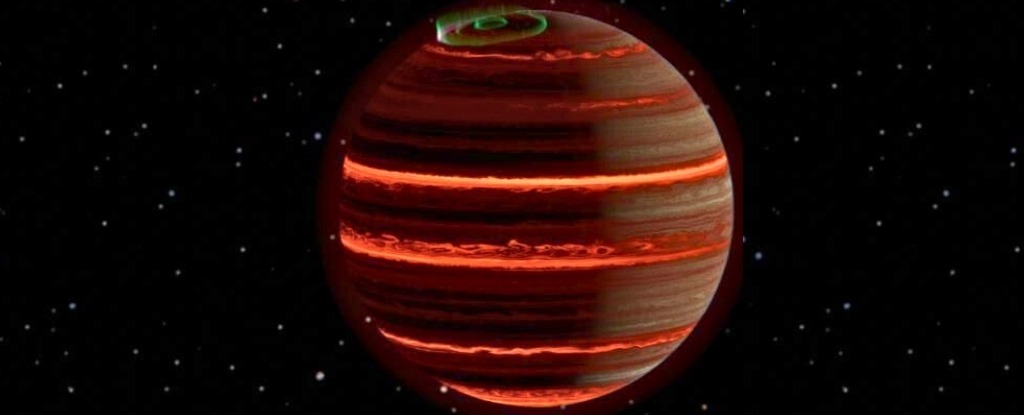
A recent study published in Astronomy & Astrophysics has shed light on the enigmatic nature of a rogue planet, SIMP-0136, using the advanced capabilities of NASA’s James Webb Space Telescope (JWST). Located approximately 20 light-years from Earth, this planet is intriguing astronomers with its atmospheric composition, temperature, and auroras, despite being far from any sun.
This international research effort aims to deepen the understanding of rogue planets, which are celestial bodies not bound to any star. By studying SIMP-0136, scientists hope to glean insights into planetary formation and evolution, offering a glimpse into the complex processes that govern these wandering worlds.
Unveiling the Secrets of SIMP-0136
The JWST’s observations revealed that SIMP-0136 is about 12.7 times the mass and 1.2 times the radius of Jupiter. Notably, it has a rapid rotational period of just 2.4 hours, allowing researchers to capture comprehensive data on its atmospheric dynamics. The study employed a combination of telescope observations and computer models to analyze the planet’s unique characteristics.
One of the most surprising discoveries was the presence of thermal inversion in the planet’s atmosphere. Unlike Earth, where temperatures typically decrease with altitude, SIMP-0136’s atmosphere is colder near the surface and hotter at higher altitudes. This inversion is attributed to the planet’s auroras, which heat its upper atmosphere.
Auroras and Atmospheric Anomalies
The study also found that SIMP-0136 experiences constant global cloud coverage, a stark contrast to Earth’s dynamic cloud patterns. These clouds are composed of silicate grains, akin to beach sand, rather than water droplets or ice crystals commonly found in Earth’s atmosphere.
“These are some of the most precise measurements of the atmosphere of any extrasolar object to date, and the first time that changes in the atmospheric properties have been directly measured,” said Dr. Evert Nasedkin, a Postdoctoral Fellow at Trinity College Dublin and lead author of the study.
Dr. Nasedkin further noted the extreme temperatures on SIMP-0136, which exceed 1,500°C, making it significantly hotter than Jupiter and Saturn. The precise observations allowed the team to detect temperature fluctuations as small as 5°C, linked to subtle changes in the planet’s chemical composition, hinting at storm-like phenomena similar to Jupiter’s Great Red Spot.
Building on Previous Discoveries
This research builds on earlier JWST data analyzed in a March 2025 study published in The Astrophysical Journal Letters. That study identified atmospheric clouds, hot spots, and carbon chemistry variances but could not determine their causes. The latest findings pinpoint the auroras as a key factor in these atmospheric anomalies and the observed thermal inversion.
First discovered in 2000, rogue planets have captivated astronomers due to their lack of a stellar orbit. Theories about their formation suggest they might be ejected from their original star systems or represent sub-brown dwarf stars. Estimates suggest there could be billions to trillions of rogue planets in the Milky Way Galaxy.
Future Exploration and Implications
Despite their abundance, the likelihood of a rogue planet entering our Solar System and posing a threat to Earth remains extremely low. However, the upcoming launch of the Nancy Grace Roman Space Telescope in May 2027 is expected to refine these estimates further.
The ongoing exploration of rogue planets like SIMP-0136 promises to unlock new mysteries about planetary auroras and atmospheric phenomena in the years and decades to come. As scientists continue to probe these celestial wanderers, the potential for groundbreaking discoveries remains vast.
As always, the pursuit of knowledge through science continues to inspire and challenge our understanding of the universe. Keep looking up and exploring the cosmos!




